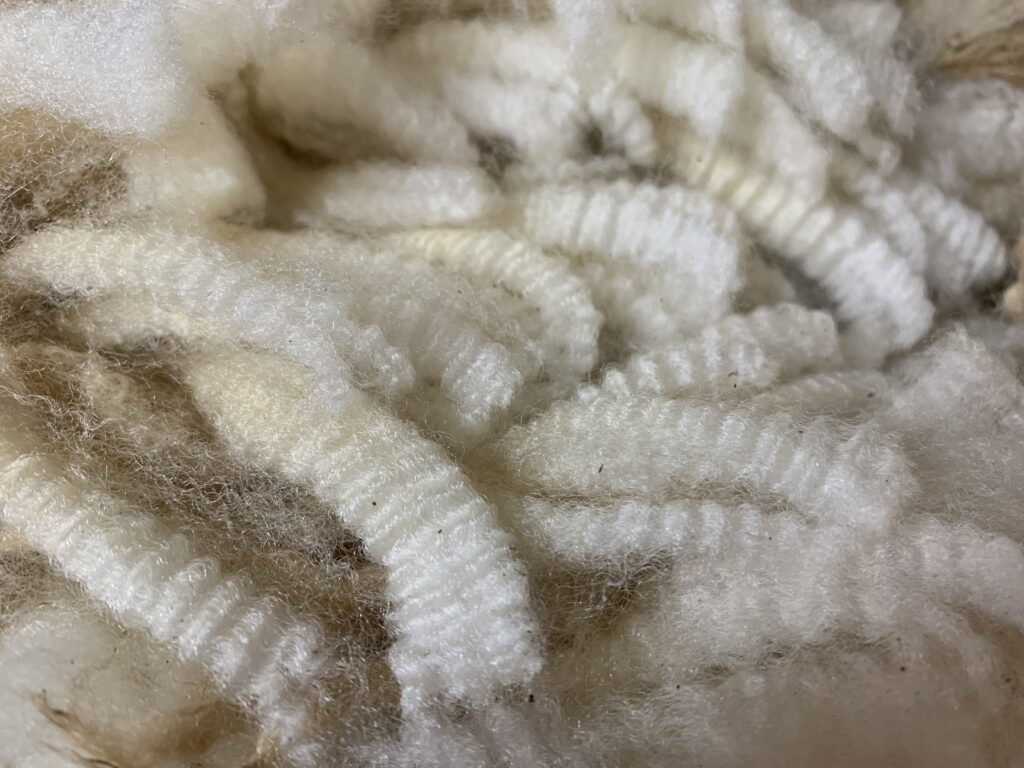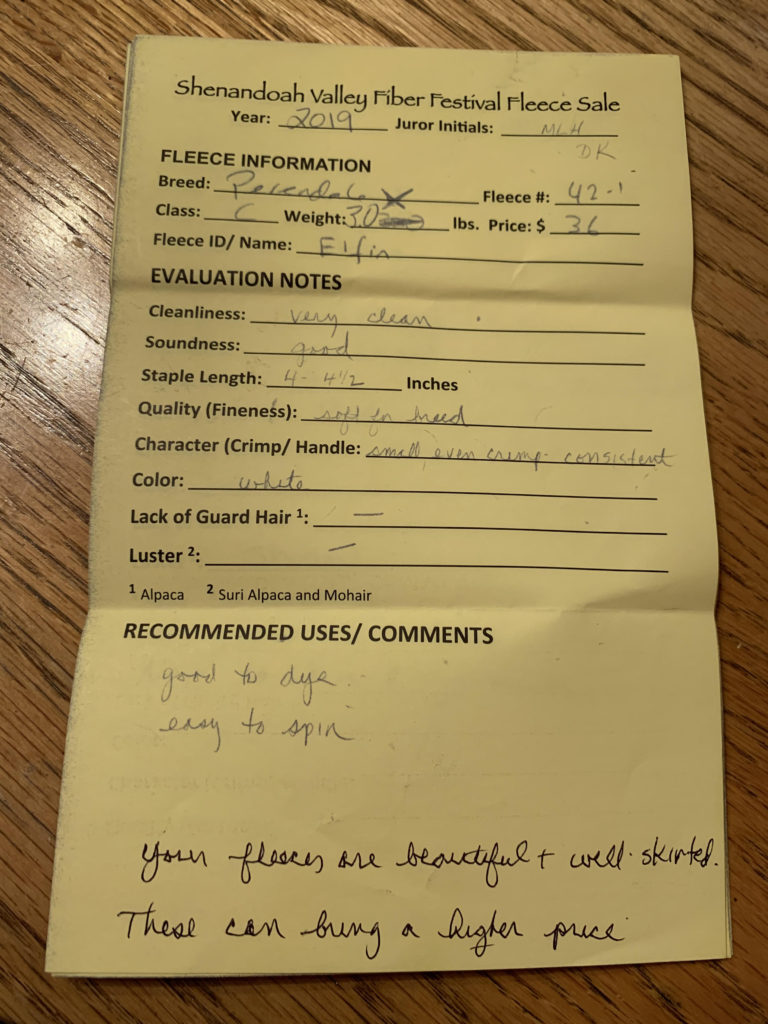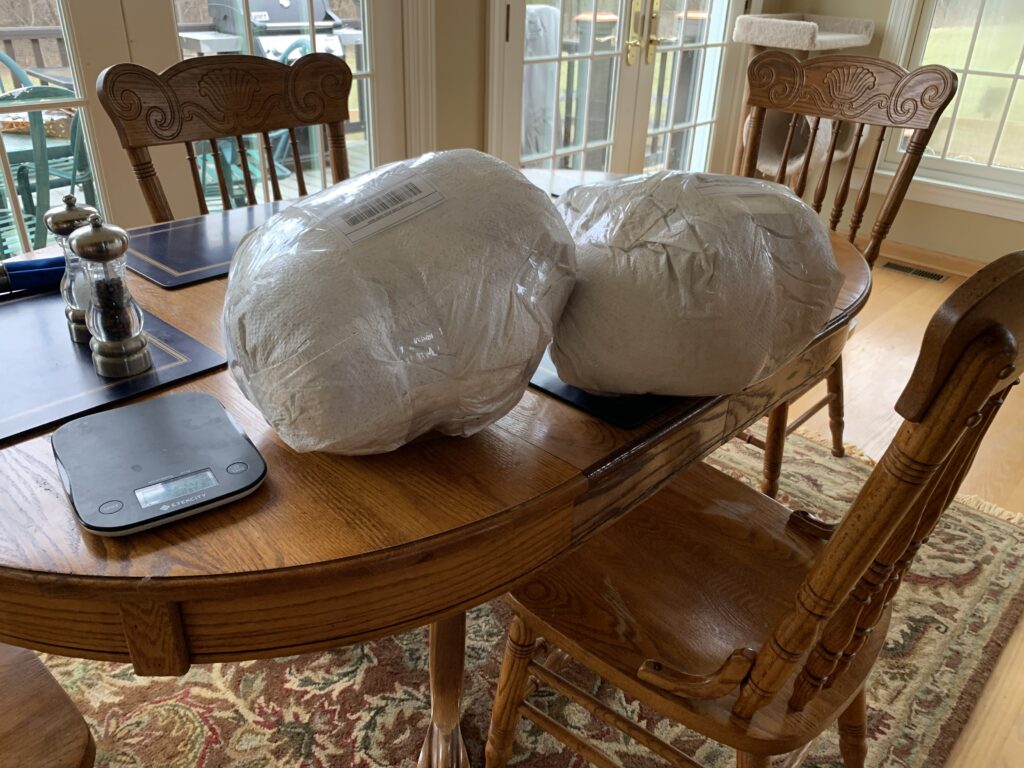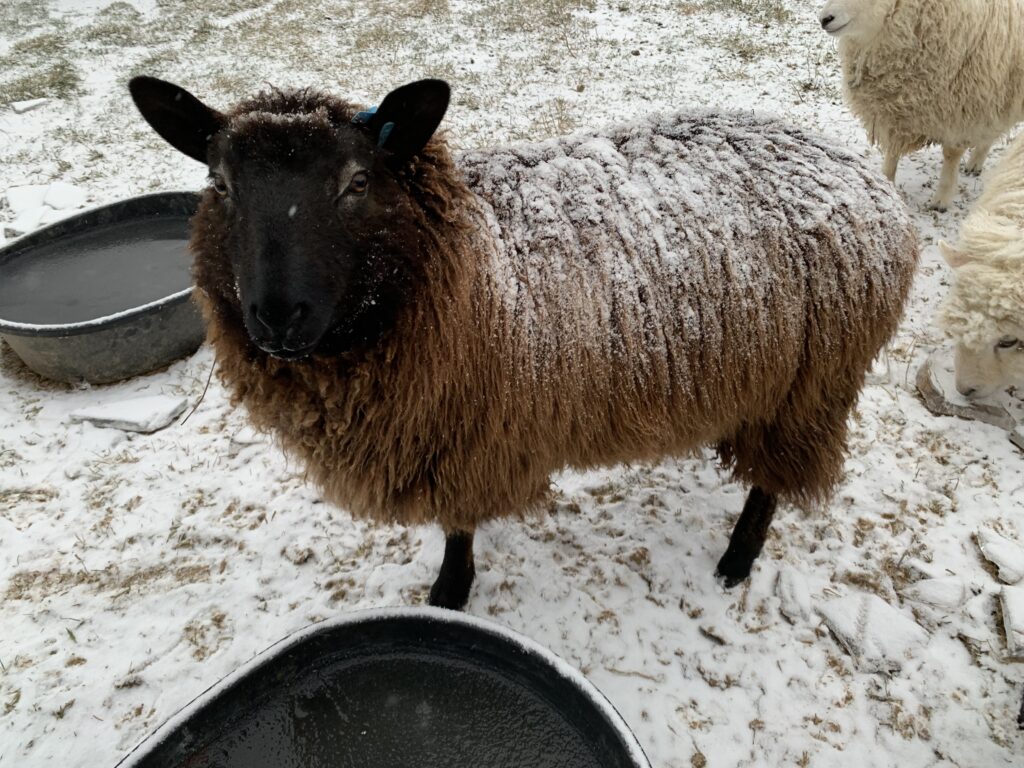Where and How to Find Our Fleeces
We sell our Perendale fleeces at the Maryland Sheep and Wool Festival (first full weekend in May), where our fleeces typically sell out, as well as at the Shenandoah Valley Fiber Festival (whenever we can manage to make it there!). We also sell our fleeces online via “Raw Wool for Sale” on Facebook.
If you would like to be on our mailing list for fleeces, please contact us – ideally by mid-April if you wish to reserve a fleece or fleeces! We are typically busy during March with lambing, and during April skirting as many fleeces as possible prior to the Maryland Sheep and Wool Festival, so we usually start to ship fleeces to customers during May.
Fleece Quality
Please note that our sheep are not coated. Nevertheless, you will find most of them relatively (though never 100% entirely) free of VM. What VM exists is mostly grass hay (not alfalfa) or bedding and should comb out quite easily.

We are a certified Level I wool classer, and our fleeces are professionally shorn, so should be of high quality and relatively free of second cuts. Our lambs graze our hayfield all winter, receiving little if any hay (and only in tubs on the ground following snowstorms). As a result, our lamb fleeces tend to be exceptionally clean (unless we have one of those winters when mud season extends from November through March). We should have micron count data available on all of our lamb fleeces by early May.

We feed our adult ewes in hay feeders with small holes, and do NOT feed alfalfa until the ewes are shorn ~ 1 month before lambing. Although our adult fleeces will have some vegetative matter (VM; especially about the neck), we will skirt out any areas with high VM, as well as any excessively muddy areas or regions that are shorter than 3″, any areas with cotted tips, or any britchy areas. (Any poop is skirted out at shearing). All fleeces are tested in several locations for soundness. We are happy to stand by the quality of the fleeces we produce, as we want only happy fleece customers.
Fleece Shipping/Payments
We know how to ship fleeces inexpensively! We often find the most economical means of shipping a single fleece is to ship via USPS Priority Mail. Purchasing USPS shipping labels from a discounter, Pirate Ship, provides your parcel with free tracking and $100 insurance, at a cost typically half the retail cost you’d pay walking into the post office. If we first compress a fleece as much as possible with the help of a shop vac, we can mail a fleece half way across the country for approximately $15, depending on its weight. We accept PayPal, and your fleece will typically go out the day after your invoice has been paid.

Timing for Fleeces
We shear our ewes in ~ early February, approximately one month prior to lambing (early-mid March). It may seem cruel to shear ewes in mid-winter, but sheep are amazingly resilient, and if provided with access to shelter in case of extremely cold weather, freezing rain, and/or wind, they suffer no ill effects. Shearing prior to lambing conveys a number of benefits to the health of the lambs, who tend to suffer substantially less mortality.
If you’ve ever seen a photo of a ewe after a snowstorm, you’ve probably noted the heavy layer of snow on her back. This signifies that her body heat is not being efficiently transmitted through her fleece. If she were lying next to her twin lambs, they wouldn’t be warmed by her. Once her fleece has been shorn, she’s able to transfer body heat to the lambs snuggling next to her.
